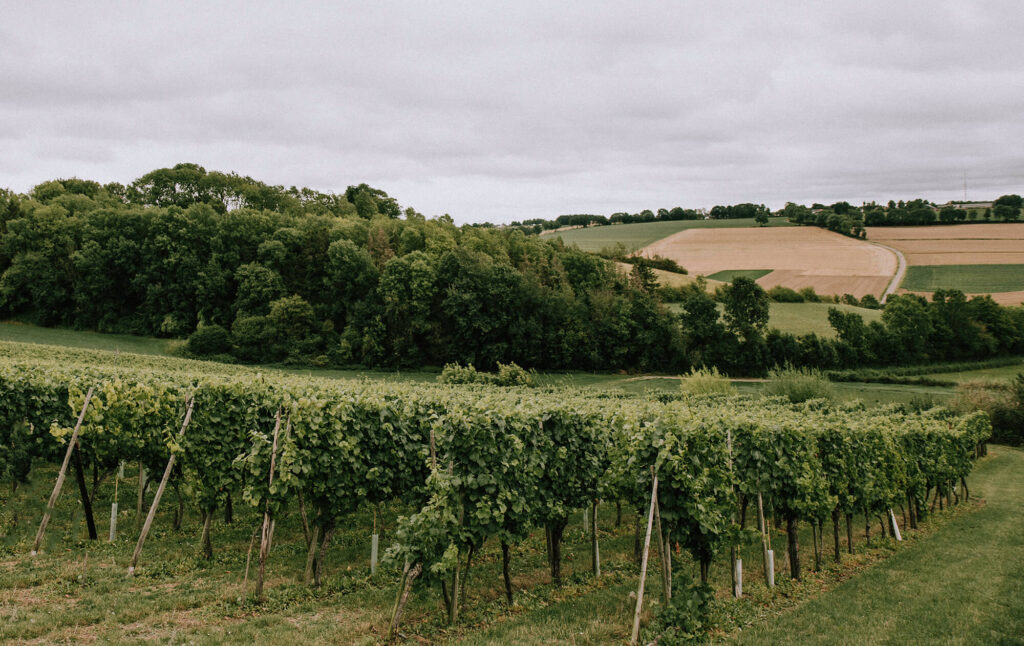
The clouds hung low over the Zuid Limburg countryside, the late afternoon sun trying her best to shine over the land of Burgundian opportunities we had just arrived to. Gently rolling hills stretched far into the distance, the only disturbance being patches of vineyards and nostalgic villages with half-timbered houses.
Look at the Southern part of a map of the Netherlands, then go a bit further – Zuid Limburg will be there in all it’s hilly splendor. Thirty minutes’ drive east of Maastricht, lies a little slice of the Netherlands just waiting to be explored. Colourful landscapes and charming cottages sprinkled amongst vineyards – Zuid Limburg is the very picture of the Alsace and the perfect home away from home for a weekend.
A romantic weekend getaway: sipping wine in the Holland countryside
Rugged untouched beaches and a unique language in the north, jaw-dropping flower-bulb fields in the west, historic cities, picturesque waterways and windmills, coffeeshops and famous artists like Van Gogh. For anyone seeking out an unforgettable travel experience, the Netherlands really does have it all.
So, does that mean the Netherlands are done for the slow traveler and seeker of hidden gems?
Have all the secret treasures been paved over or touristified beyond all recognition? Thankfully, the answer is a definite no.
A unique Dutch experience can still be had for the intrepid travelers and romance seekers amongst us.
Spend a slow weekend in the rolling hills and colorful vineyards at the extreme south of the country.
This is where the village of Epen lies just to the east of the city of Maastricht and where your mini road trip will begin. You'll take small roads to charming villages like Vijlen and Voerendaal. You'll drive along fragrant old orchards, tranquil villages, stunning landscapes, and terraces with delicious local cuisine.
Here's our take on a romantic southern Netherlands road-trip through Zuid Limburg!
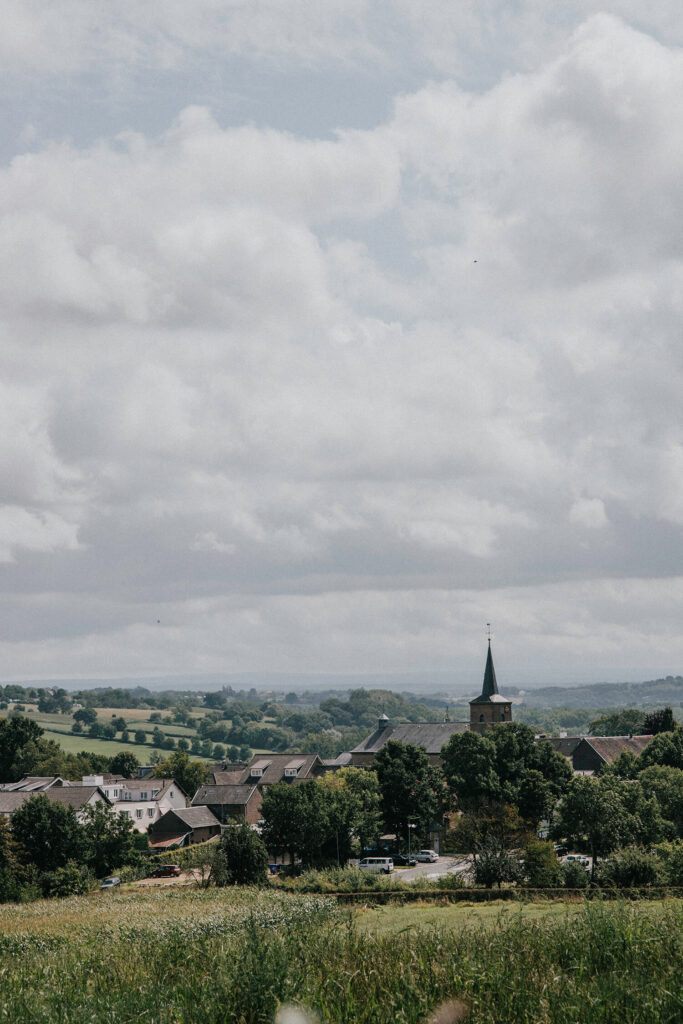

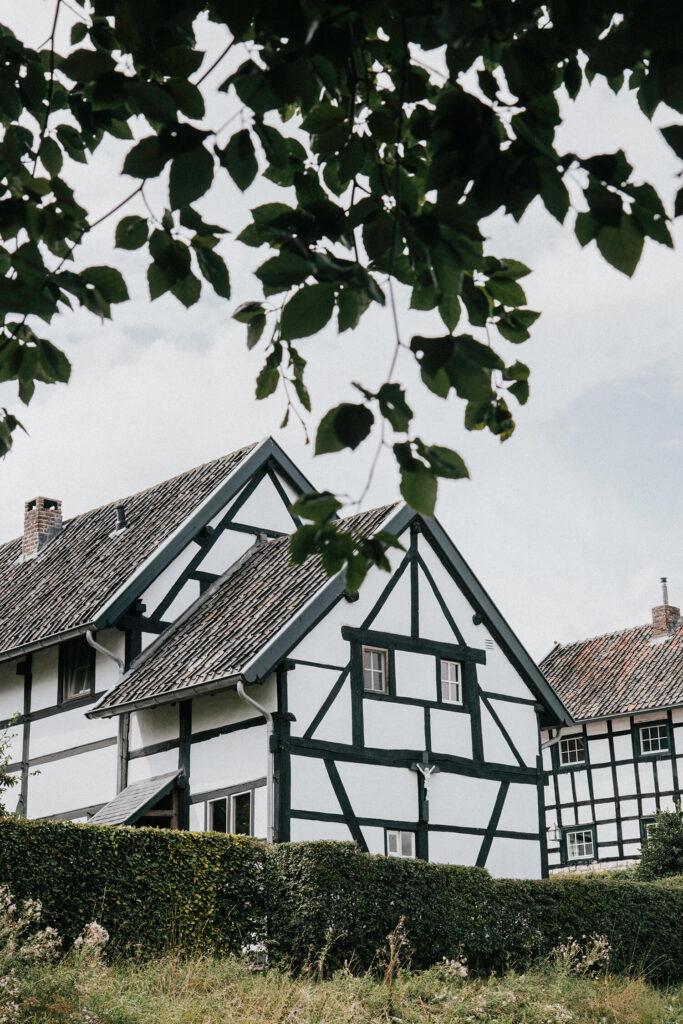
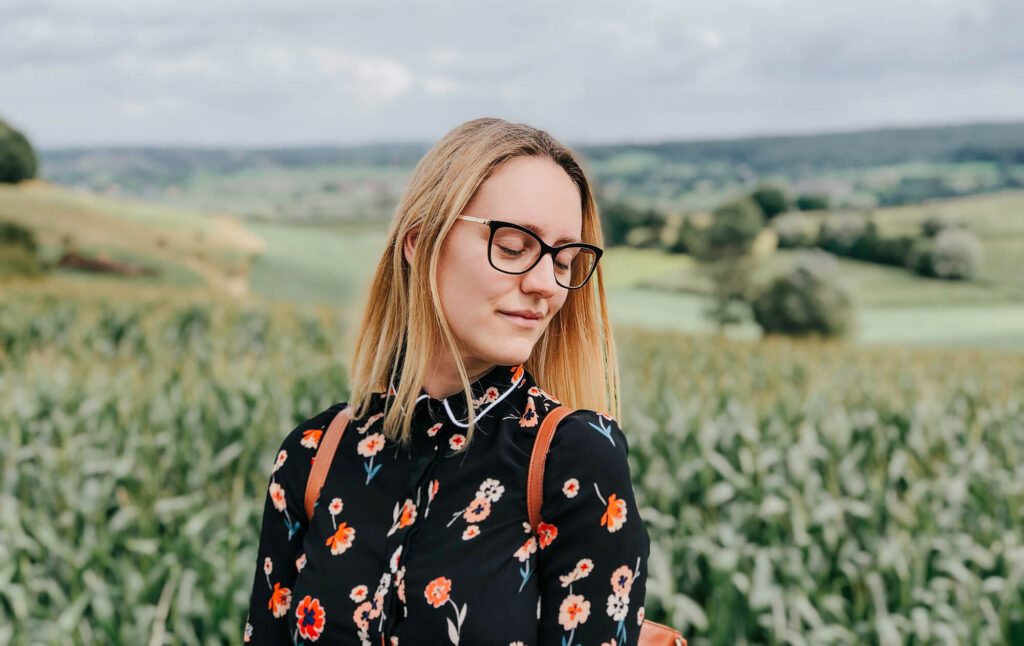
Friday
Strolling past half-timbered houses and water mills in Epen
Behind me I hear the tranquil splashing of a lonely watermill. The quiet village of Epen slowly flowing into meadowy landscapes, inhabited by cattle and sheep. Before me half-timbered houses pop up like white daisies in the green countryside. It’s August but the clouded sky produces the occasional drizzle. On my left and right dozens of cows are rolling bulkily through the tall grass, the air perfumed with the earthy scent of the rain falling on the dusty paths. The animals don’t seem to be bothered by the wet intermissions and quietly continue their muscle twitching when we walk past. Why would they be disturbed with such peaceful scenery surrounding them?
It doesn't take long before we pass by the first vineyard of the weekend. The coming days Kristof and I will walk on trails that are an important part of the wine history of the southern Netherlands.
"The path leads us through rolling hills dotted with nostalgic villages with half-timbered houses"
Wine was introduced by the Romans in this region. An important Roman road connected Cologne and Heerlen and lies at the origin of the production of this divine substance in Zuid Limburg. However, centuries later Napoleon ordered to destroy all vineyards. After all, wine was considered an essential part of French identity and was not to be produced outside of French borders. It is only recently that this region started to embrace its rich wine history again.
The dusty Roman roads now have given way to beautiful hiking trails throughout the area. The landscape is marbled with small idyllic creeks, creating winding mossy paths taking us back to the village of Epen. At this time of the afternoon the shadows cast by the setting sun have grown longer by the time we walk into De Smidse, a local tavern, just outside Epen’s city centre.
The wind whips through the tall grass of neighboring fields, announcing another bunch of raindrops and ushering us into the cozy inn. Sweet aromas of lovingly prepared regional dishes instantly taking me back to the time I spend my summer holidays at grandma's. If visits to your granny’s house as a child were anything like mine, they were a curious cocktail of intense wallpapers, eclectic china collections and a complete apathy for minimalism. That woman was clearly onto something, the grandma chique interior of De Smidse is the perfect place to unwind after trodding through nature. The food is so simple and wonderful that each dish - Zuurvlees and a platter of local cheeses and bacon - feels like a trip down memory lane. My nan would definitely approve.
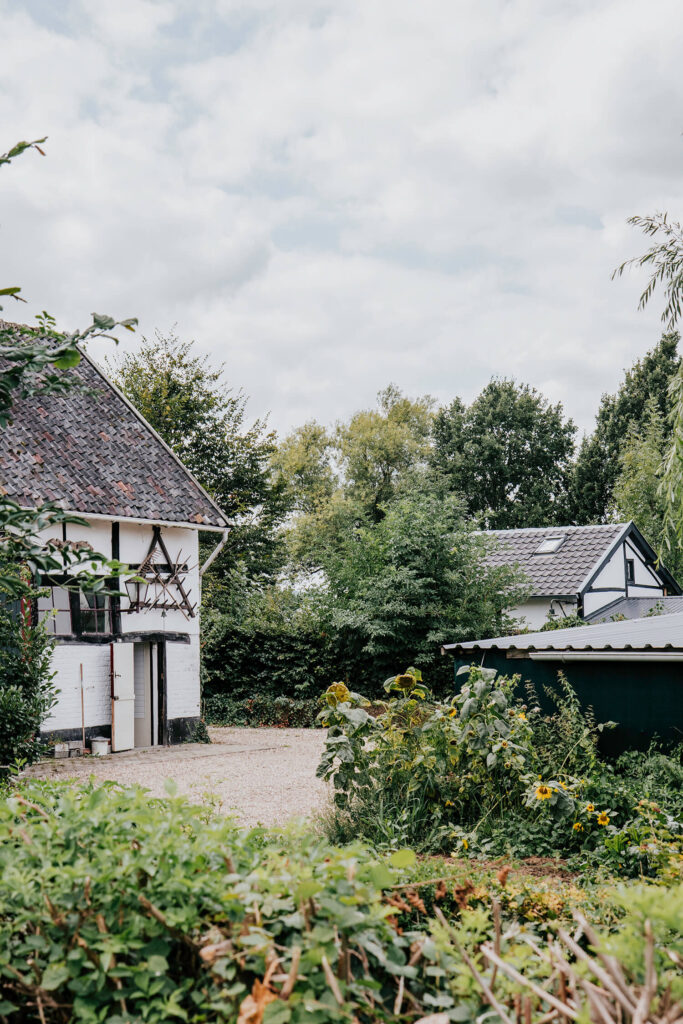
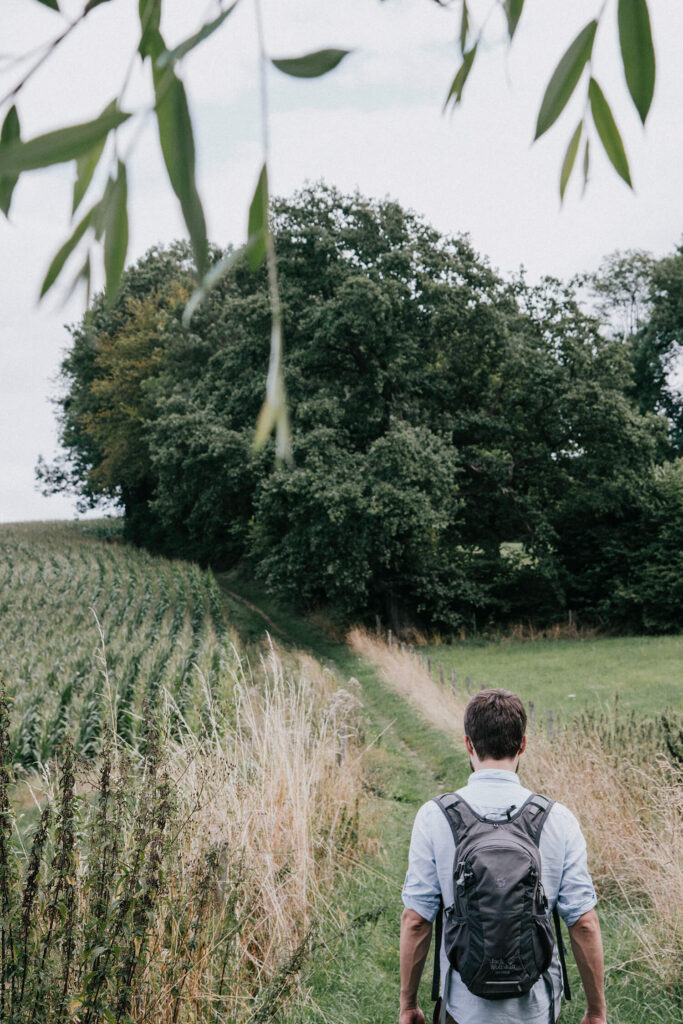
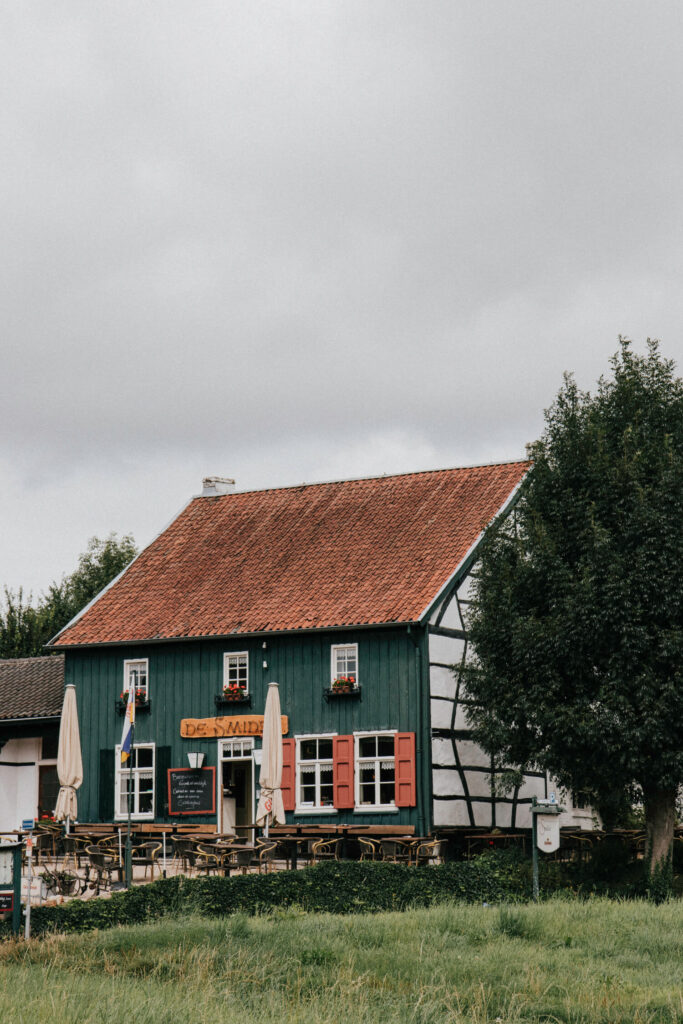
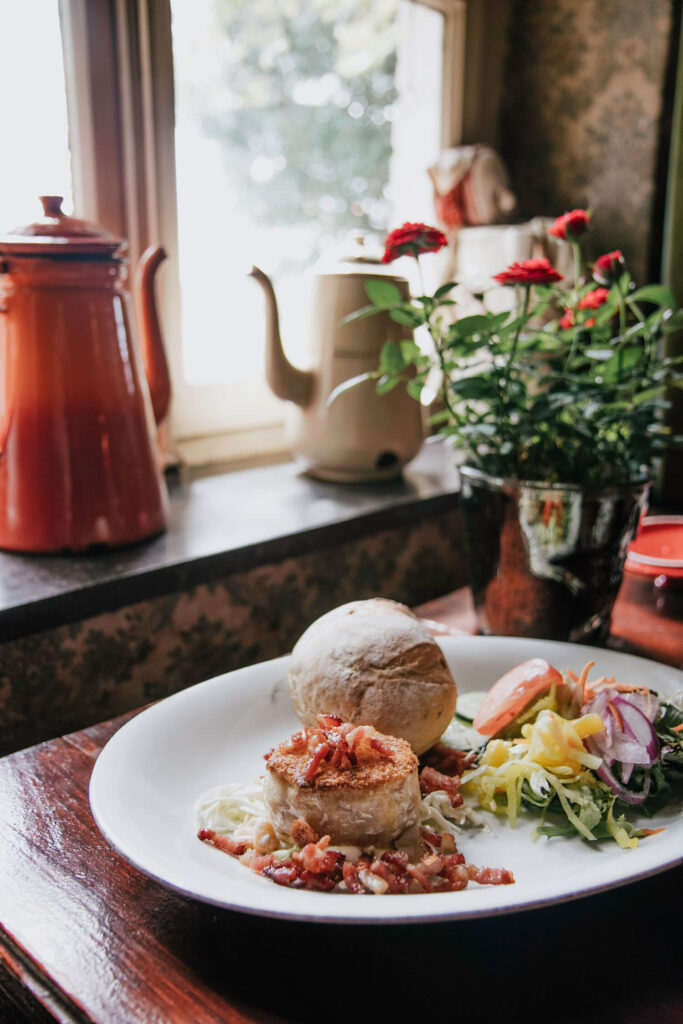
We continue our trip to Holset, an adorable village which generously lends its name to the first winery we visit this weekend. Along the way there it looks like a large patchwork was rolled out across the surrounding countryside. Different shades of green emphasizing the hilly scenery. Not exactly what we imagined of the normally flat Netherlands. Nor did the cyclists we pass by, affirmed by the little beads of sweat shining on their foreheads.
Run by an incredibly likeable business-duo, Bram and Kirsten, Wine Estate Holset is a very perfect example of what it means to follow your dreams. “It was love at first sight for the owners: the ruins of a farmhouse with the friendly village of Holset and an old church at its front and the magnificent hilly landscape at its back”, says Bram. Since two years, the old farm has been completely transformed into a wine estate with respect for traditional production processes.
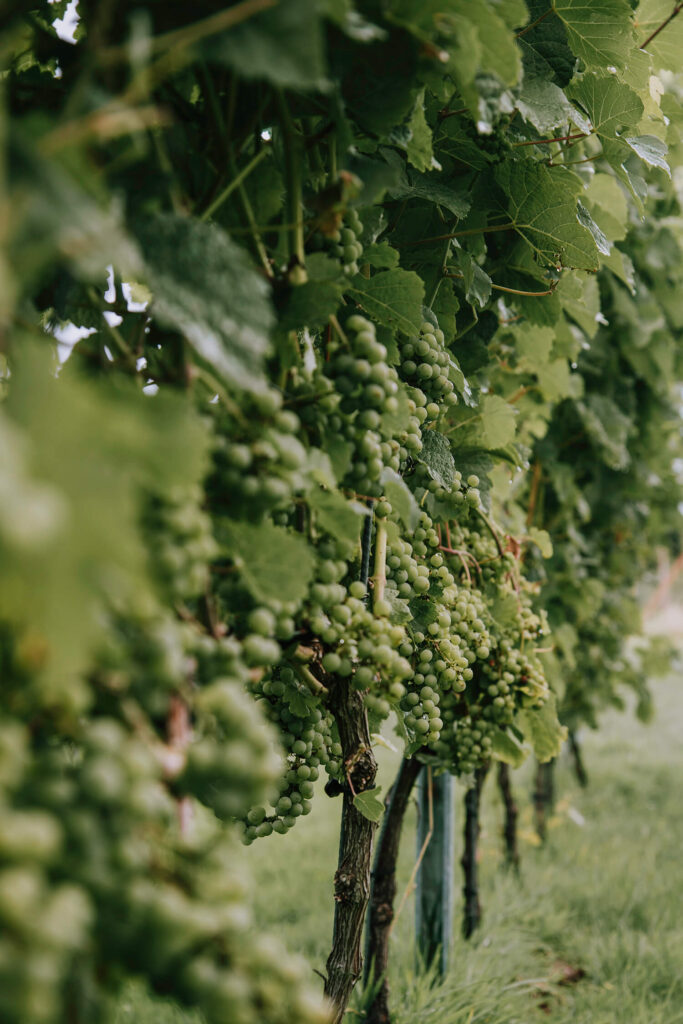
In the vineyard we find a mix of classic and cool climate varietals such as Souvignier Gris, Chardonnay, Cabernet Blanc and Johanniter. They thrive in our climate and are ideal for sparkling wine. Born with a passion for the traditional, Bram, Kirsten and the other colleagues are definitely an important part of the wine revival in the southern Netherlands.
"Where the world globalizes and robotizes, the need for craftsmanship, intimacy and "local" arises."

I am under the trees at a long wooden table, drinking a glass of their sparkling wine. A melted white moon is hanging above the Zuid Limburg countryside. Over the hilltops the last light of the day casts a deep golden glow over the vineyard that spills out below. There could be no better introduction to this delightful piece of the Netherlands.
Where to stay: Stay in one of the seven rooms of Wijndomein Holset. The rooms have wonderful names such as ‘oyster’ and exude calm and serenity. On balmy summer mornings you can relax on the beautiful terrace to enjoy your breakfast in a wine box with delicious cakes. You can arrange a guided tour and tasting session for €15 per person.
Where to eat: De Smidse is a cozy inn with a menu filled with delicious local produce. The eclectic decor takes you back to the old days. The location is ideal, close to several hiking trails nearby.
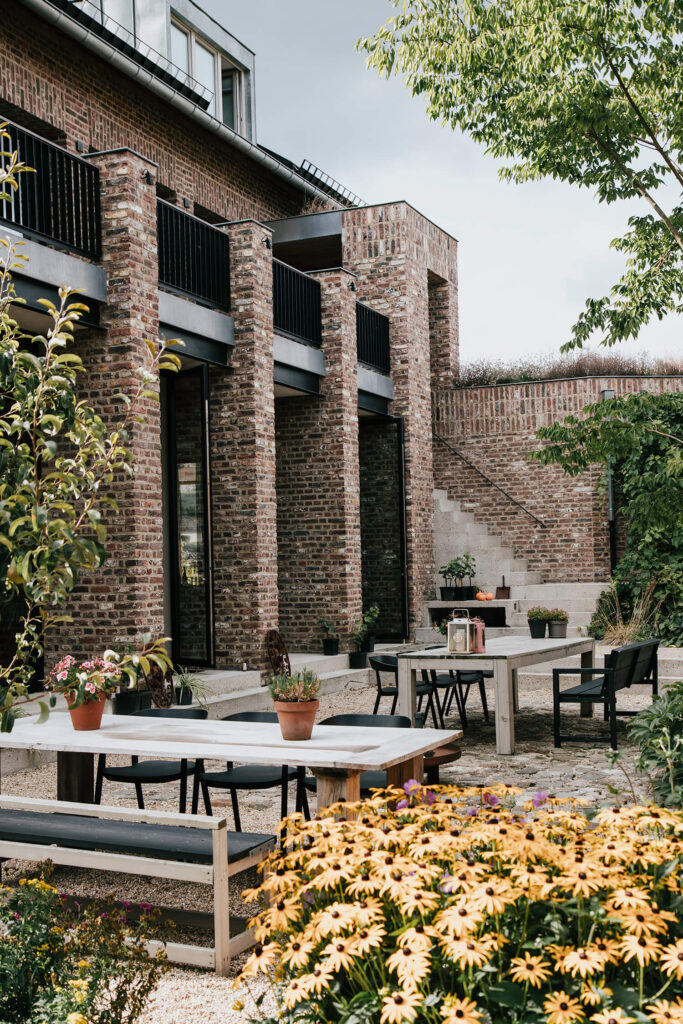

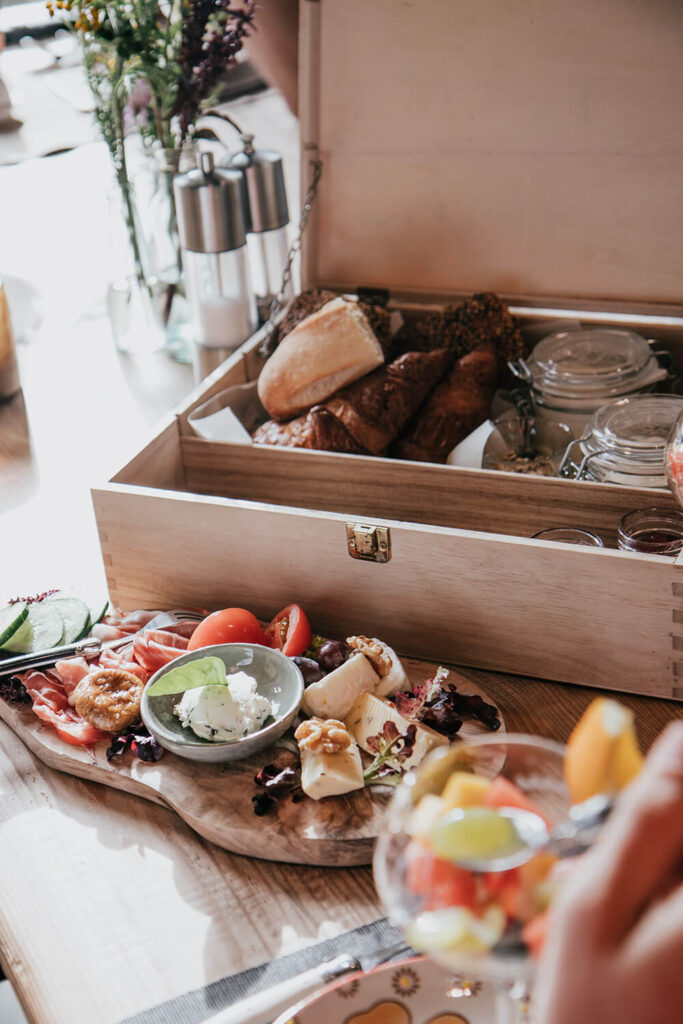
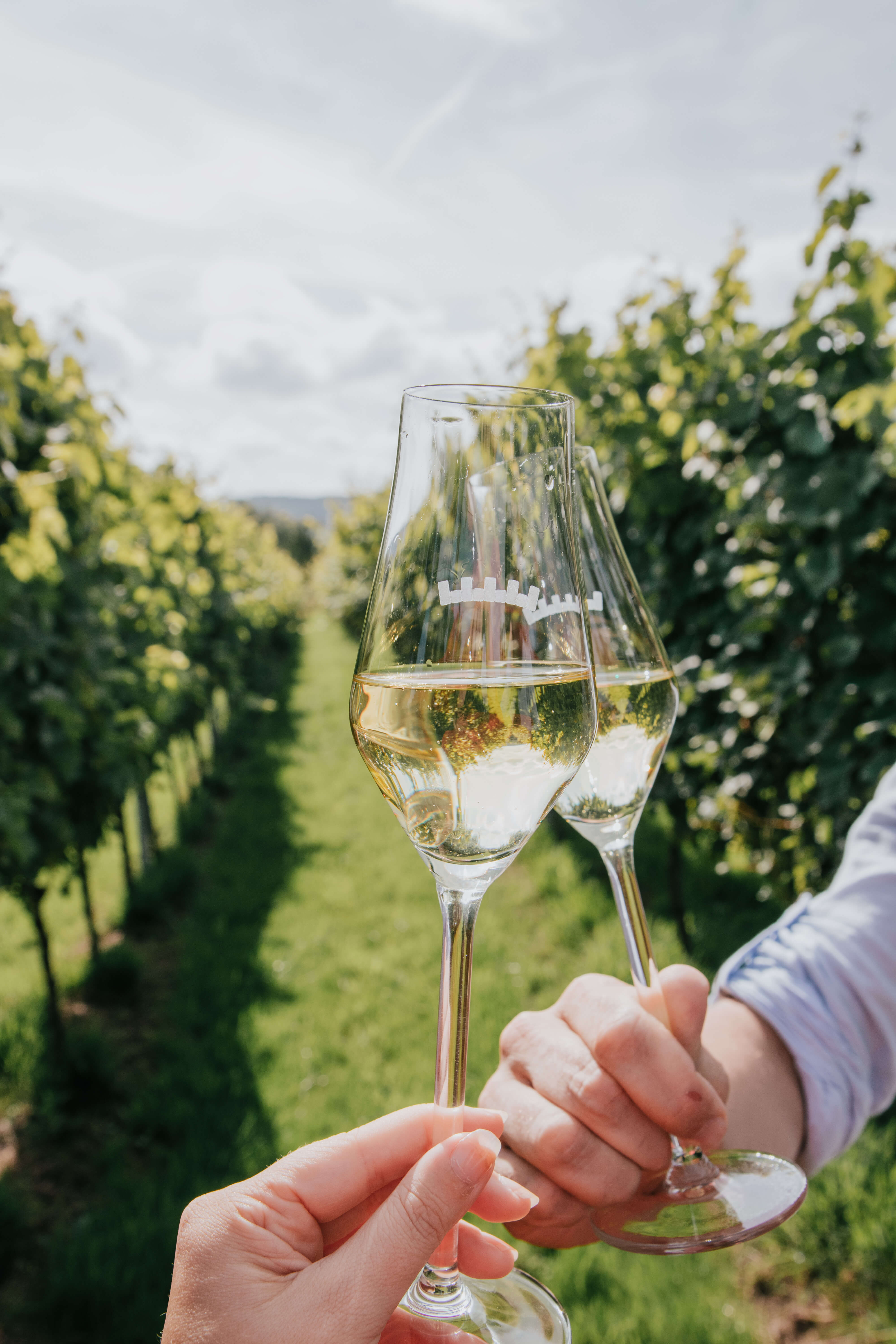
Saturday
It's a serene, radiant morning in Holset. There is a sweet smell of cheesecake and croissants in the air and the birds are singing. The problem with a view like this is that you risk loosing an entire morning to it. Over breakfast we've watched the sunshine shift over the absurdly beautiful Zuid Limburg skyline for over an hour. We should head out, I think.
The only mountain village in the Netherlands
Vijlen is one of the highest points of the Netherlands and is the only town bestowed with the title of mountain village. With its whopping 280 meters altitude we are almost at the "summit" of the Netherlands, which lies a few more kilometers to the east in Vaals at an altitude of 322 meters. Life here passes at a gentle pace. We loose ourselves for hours while clambering through the surrounding fields and forests. Wandering through the dusty and mossy trails and past several road crosses or wegkruisjes, we arrive at Het Hijgend Hert.
This “mountain hut” is situated in the middle of the largest forest in the Netherlands. The Vijlenerbos, which stretches over an area of 650 hectares, borders on the southern edge of the forest to neighboring country Belgium. This region was already inhabited during the Bronze Age, witnessed by the several burial mounds (tumuli) we pass by.

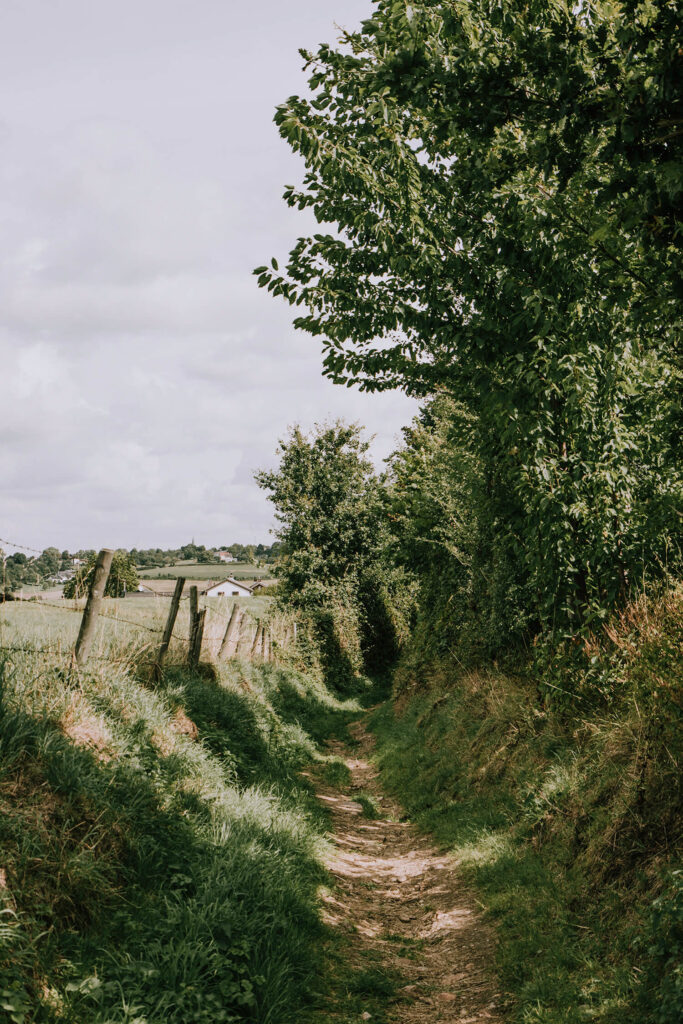
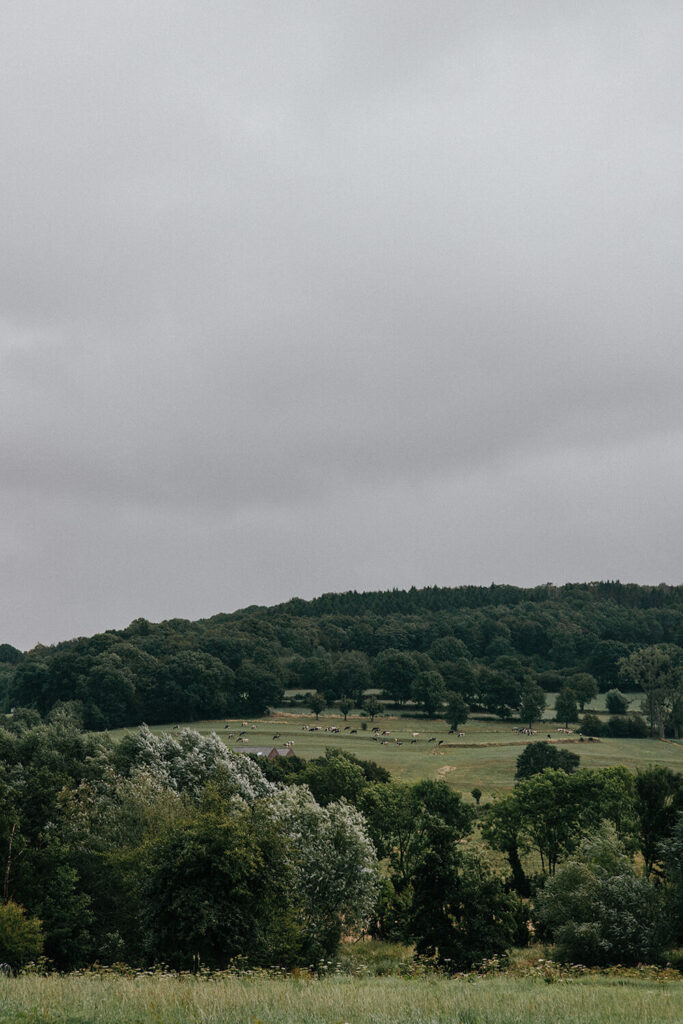
Nowadays, the most prominent evidence of people living in the area are the half-timbered houses and road crosses you find dotted around the countryside. The half-timbered houses are constructed with a skeleton made of wood and walls made of stone, clay and straw. Until 1850, this was the traditional way of building houses, using only locally sourced materials. Wherever you walk in Zuid Limburg, road crosses will be your constant companions. These religious pearls in the Zuid Limburg landscape are unique to the region and once you spot one, you'll see them everywhere!
Finding passion at the Netherlands' largest vineyard
In a stonewashed sky, the afternoon sun has reached her peak and is slowly starting her decent towards the church spires and red tiled roofs that grace the horizon. It's a generous view, wide enough for sharing - which is just as well. Tens of other wine lovers flock towards Winehouse St Martinus open air terrace to enjoy a glass of liquid gold and amber.
‘Passion, quality, sustainability, knowledge and innovation – that’s what we stand for at St Martinus’ says oenologist and owner Stan Beurskens. Over the past three decades, St Martinus’ vineyards has grown to become the most famous and largest vineyard in the Netherlands. ‘We wanted to try something different than the traditional varietals, we wanted to be challenged and challenge ourselves. We were the first ones outside of the Weinbauinstitut to adopt a new race: the Souvignier gris’ he explains. ‘We want to challenge the status quo in the world of wine making’.

Winner of numerous awards, Winery St Martinus offers a wide palate from fruity to spicy. I try a glass of Johannes which incites a sensational titillation of my tastebuds. While approaching their vineyard it strikes me how much color bursts forth from those little purple pebbles. Walking through the grapevines feels like I'm walking through a purple or green isle of my own private rainbow. There's an absolute stillness in the air. I pause at a lonely wooden picknick table and gaze in awe at endless vines fading into the faraway landscape below. The view stretches out in every direction. The vines might be graced with muted, key lime green and plum little treasures, but from this perspective all that can be seen is the horizon and a carpet of undulating vine leaves under cotton-wool clouds.
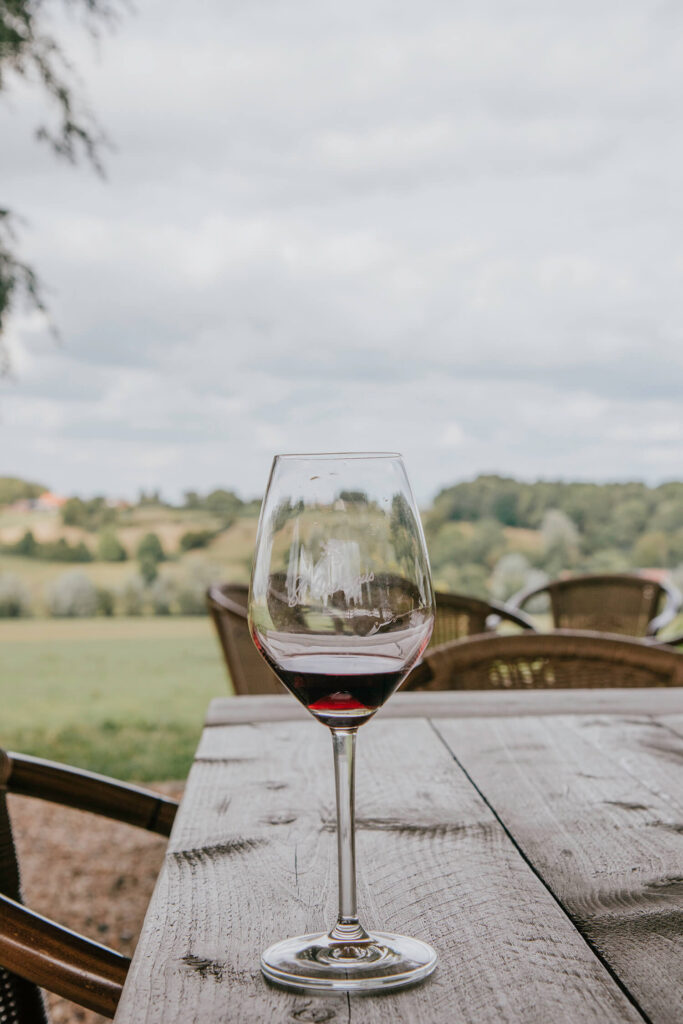
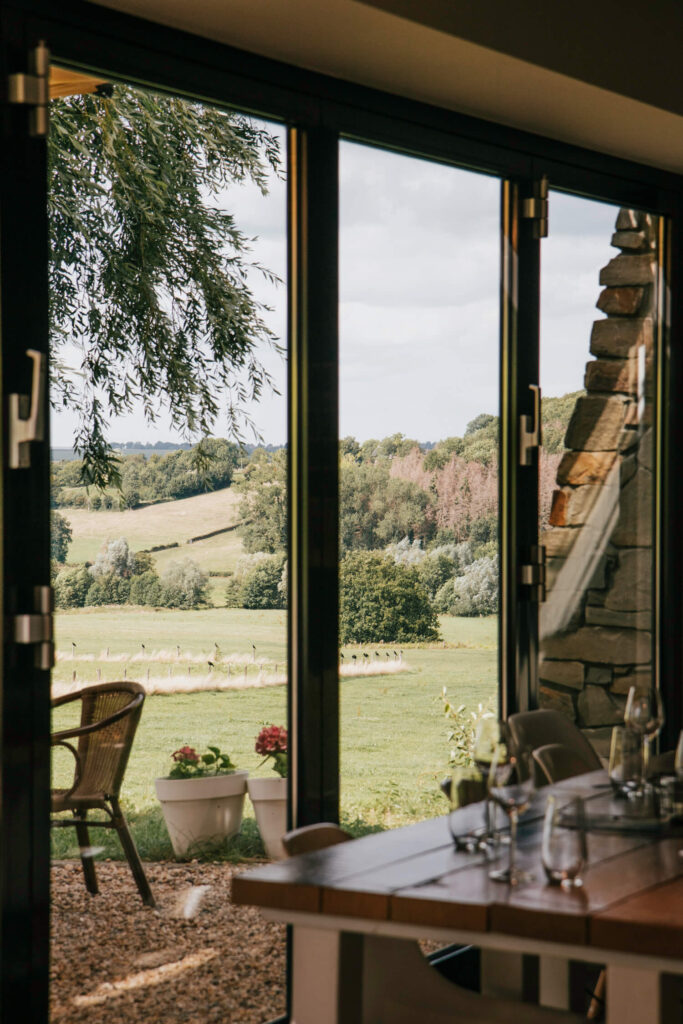

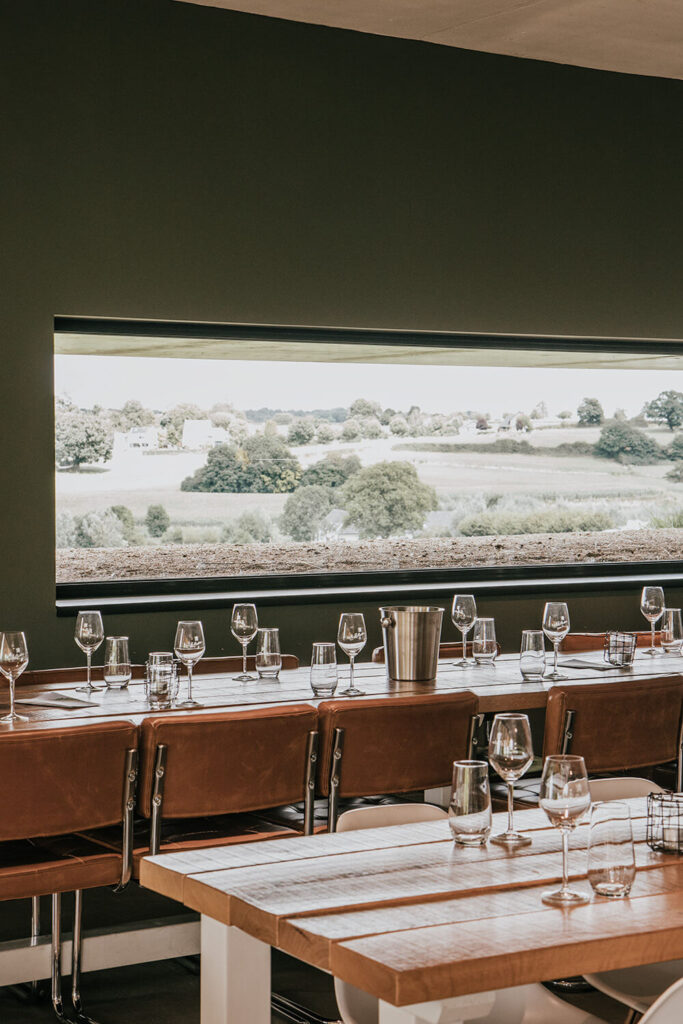
The winery’s creative cutting edge is found underground though. Here’s where Stan and his team incorporate innovation in order to produce the best possible wines. We end our tour of the wine estate in the panorama tasting room, which completely submerges you into the outdoors. I enjoy a final glass of that heavenly Johannes and conclude it has been a very fine day. You can join a guided tour with three tastings for 7,50€ per person.
Exploring Zuid Limburg's wine history
In another corner of Zuid Limburg, a twenty minute drive north from Wine Estate St Martinus, a grand villa has reimagined the possibilities of the region's history. The villa's owner Jasper Habets, artist and aspirant history buff, transformed the villa's outdoor area into a grand Italian sculptured garden along with a small orchard.

Standing in the sunshine, Jasper introduces us to Villa De Proosdij's rich history. The garden we're standing in used to be the very first vineyard ever officially registered in the Netherlands. But even before that time in the early middle ages, vineyards were planted on this very land.
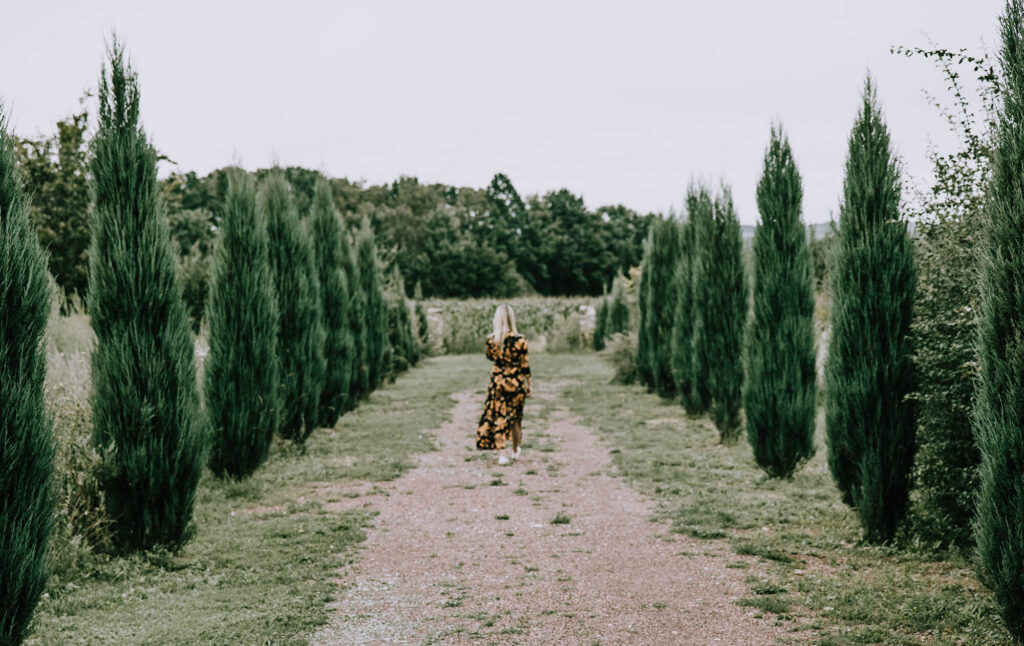
Roman roads used to crisscross this land to connect the cities of Cologne and Heerlen and brought their beloved vines with them. Italian vines used to flank the dusty Roman roads, even in these regions. Jasper has painstakingly restored this domain in order to reflect that forgotten fact in history. Having produced his very first bottles of wines last year, Jasper invites us into his tasting room, a wine cellar oozing with character.
Archeological findings from his domain are carefully exhibited here and can be perused with a glass of wine in hand. After an hour of sipping the local produce in the carefully kept garden, I retreat to our royal chamber, where my mind drifts sleepily over the pages of my own bedtime story: the tale of Roman conquerers and a villa where the very first wine of the Netherlands was produced.
Where to stay: Stay in one of the four stately rooms of Villa De Proosdij. The rooms are spacious and lovingly decorated with respect to the origins of the house. Enjoy a glass of their own wine in the lovely Italian garden and watch the sun set over the surrounding countryside.
Where to eat: Hidden in the largest forest of the Netherlands, lies a cozy cabin offering local specialties and a place to relax after exploring the nearby trails.Het Hijgend Hert is a popular place for hikers to quench their thirst. When heading there for lunch, try the black pudding with baked apples.
Best hiking trail: We walked the pleasant 6km trail from Vijlen through the Vijlenerbos and past Het Hijgend Hert. You'll have lovely views over the mountain village of Vijlen and will pass several road crosses as well. You can check out the full list of hikes in Vijlen here.


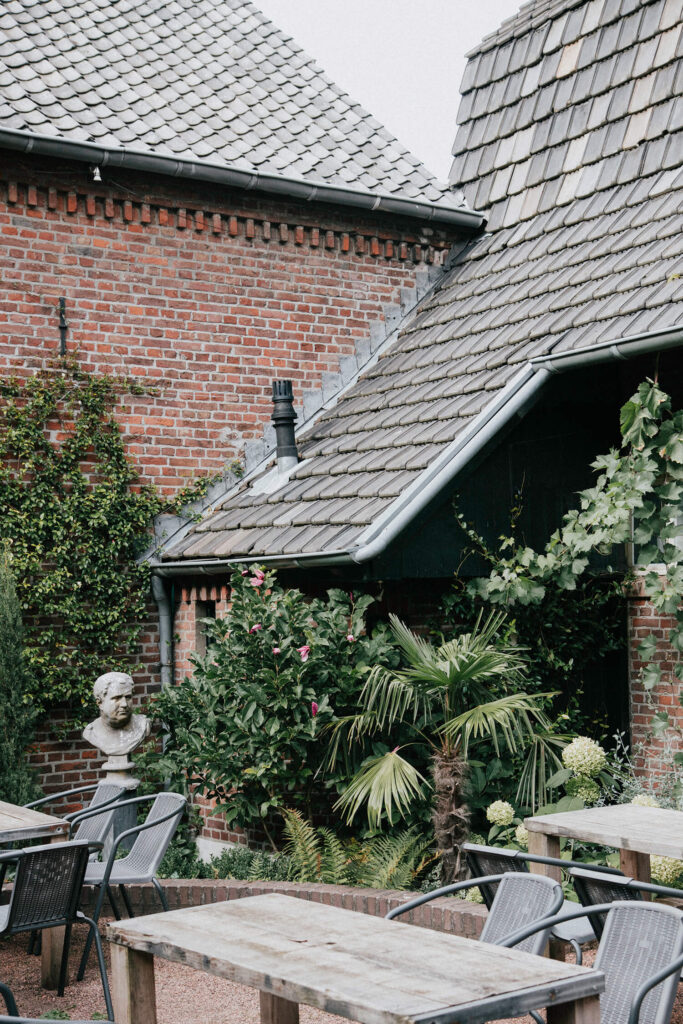
Sunday
I peered through the window of our stately room, specks of water blurring my sight over the courtyard below. The rays of sunshine displaced by gloomy clouds. It takes more than fickle weather to knock the socks off of this Belgian girl. While trying to cover my carefully styled hairdo from the measly raindrops, I spot a rainbow in the corner of my eye - creating a smile on my grouchy face. It appears to be a splendid day after all.
Chasing windmills and Limburgse Vlaai in Voerendaal
Countryside windmill scenes make up most of the photos on Dutch postcard-stands, yet I still had to lay eyes on one myself. For centuries windmills stood proud and tall, used to mill grain into flower. Today they are part of the Dutch countryside, acting as open-air museum – relics best to admire from afar.
A pleasant stroll guides us through the surrounding scenery of Voerendaal, the last stop on our romantic weekend getaway in southernmost part of the Netherlands. We planned this hike carefully so we would walk past one last vineyard before our romantic weekend comes to and end.
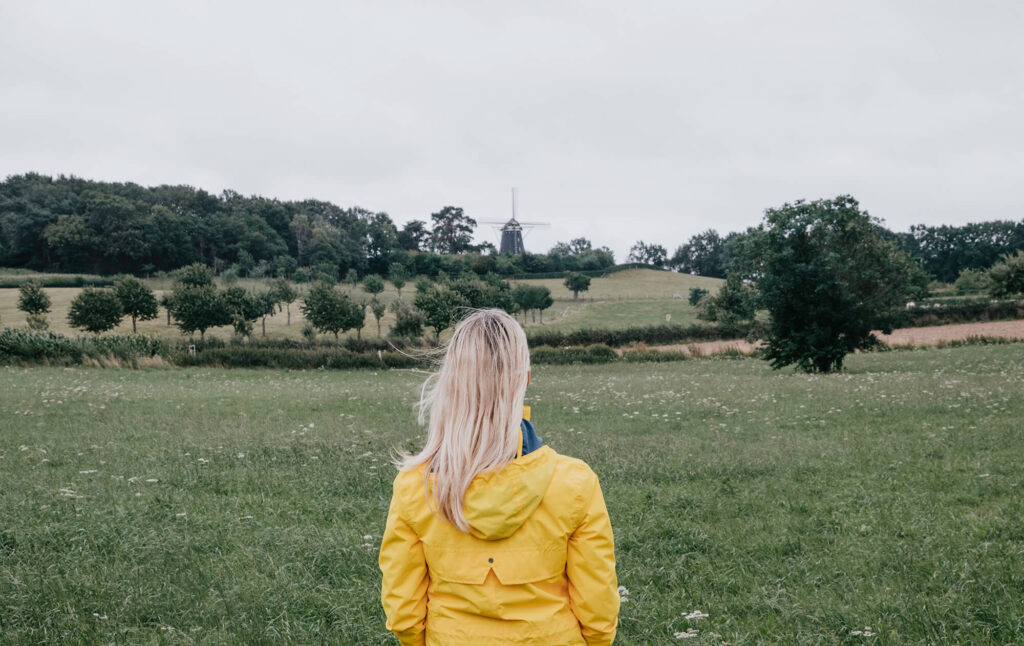
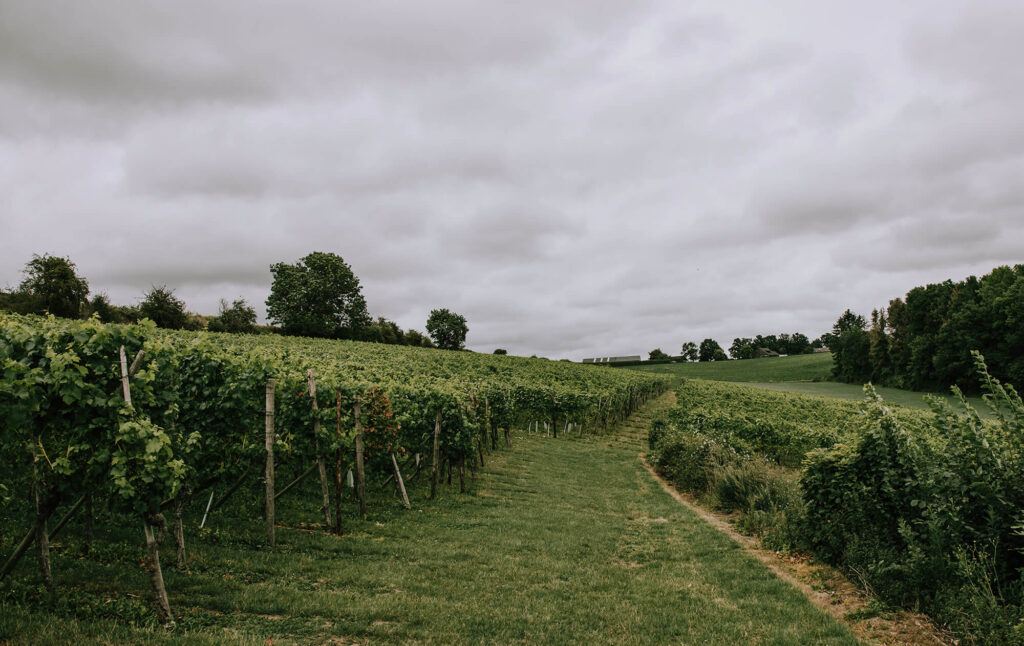

A guided tour through the domain takes about two hours and includes three tastings paired with an appetizer.
The end of our hike leads us back to the village of Voerendaal, and the cozy tavern of the Sint Bernardushoeve. A fraternity of hikers is always welcome to indulge in some sweetness here. I crave the typical desserts of the region; which comes in generous, tasty slices of Limburgse Vlaai. And the conclusion of the jury was unanimous: a definite winner. Make sure to taste a piece of this locally infamous pie when passing by.
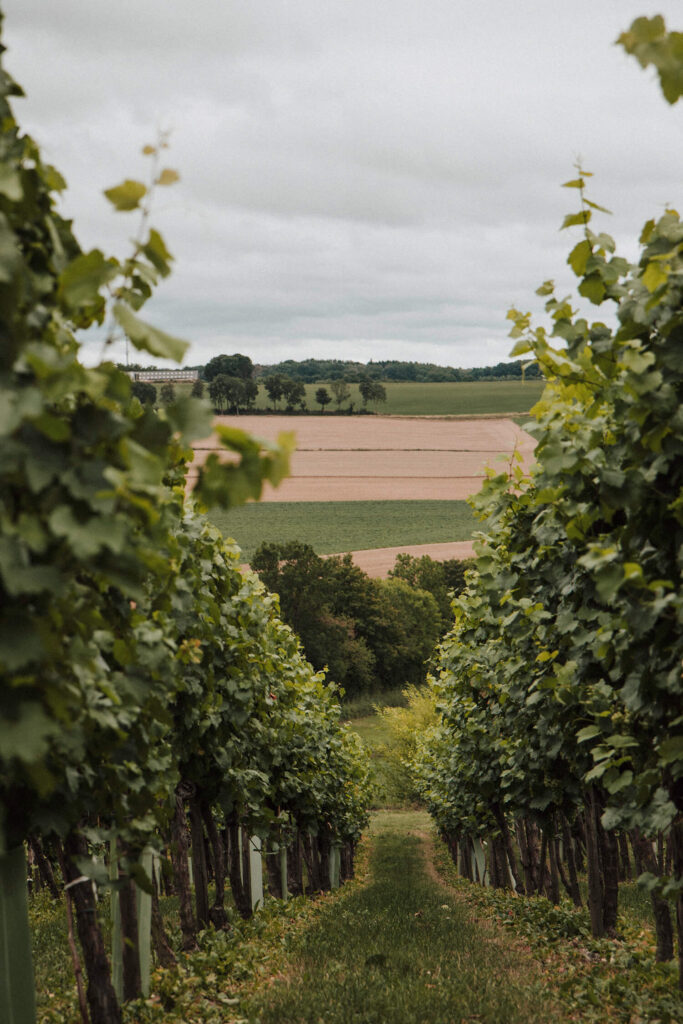
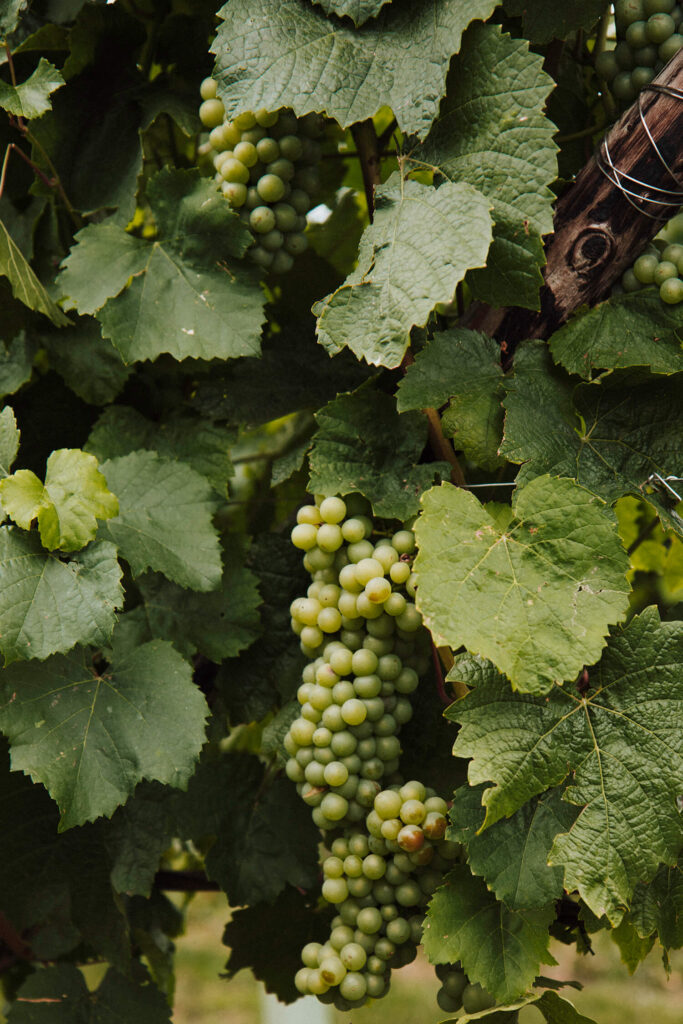

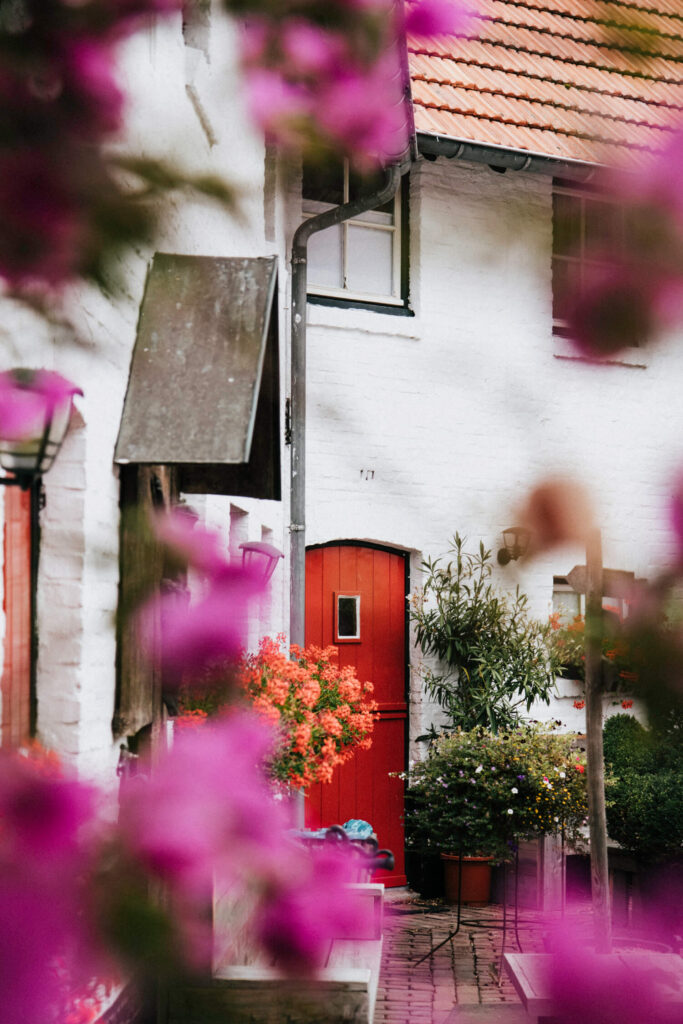

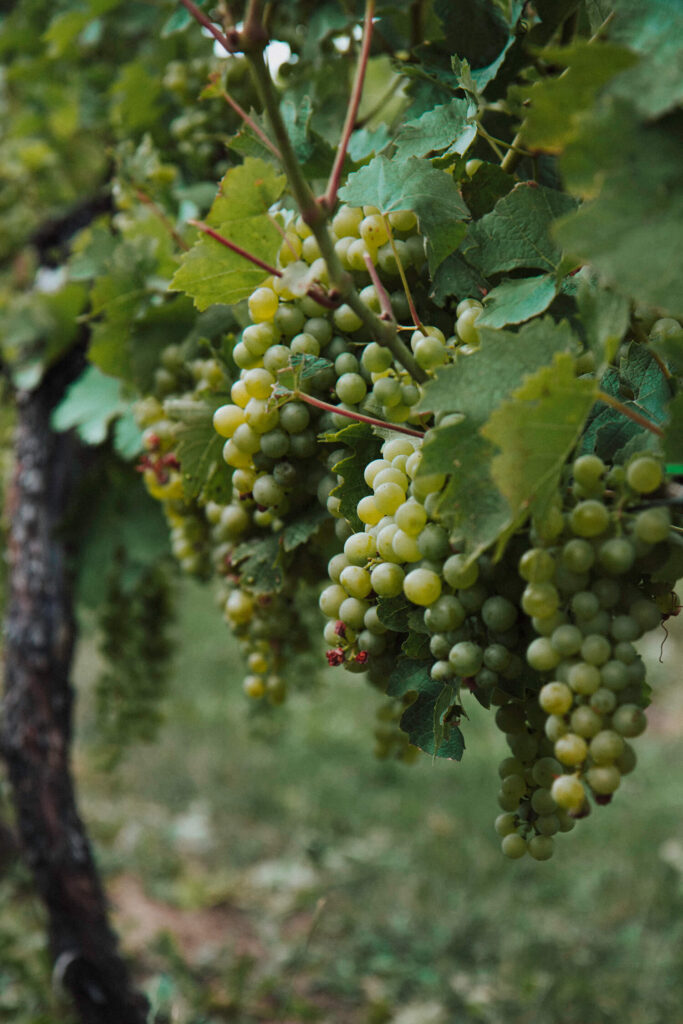
Romantic dinner amidst the vines
Few things can beat some nice wining and dining after soaking up so many wonderful experiences in Zuid-Limburg: from the vineyards and tasting its marvelous wines to the idyllic walking opportunities. One thing you can rest assure off: you will grow an appetite!
Our eye fell on the Italian restaurant Pirandello located in the beautiful Winselerhof domain in Landgraaf, a city conveniently close to all the wine domains in the region. Winselerhof even has its own small vineyard which you can admire while enjoying Pirandello’s exquisite meals, pleasantly seated in a modern yet also rustic setting (tip: ask for a seat on their terrace when good weather allows it).
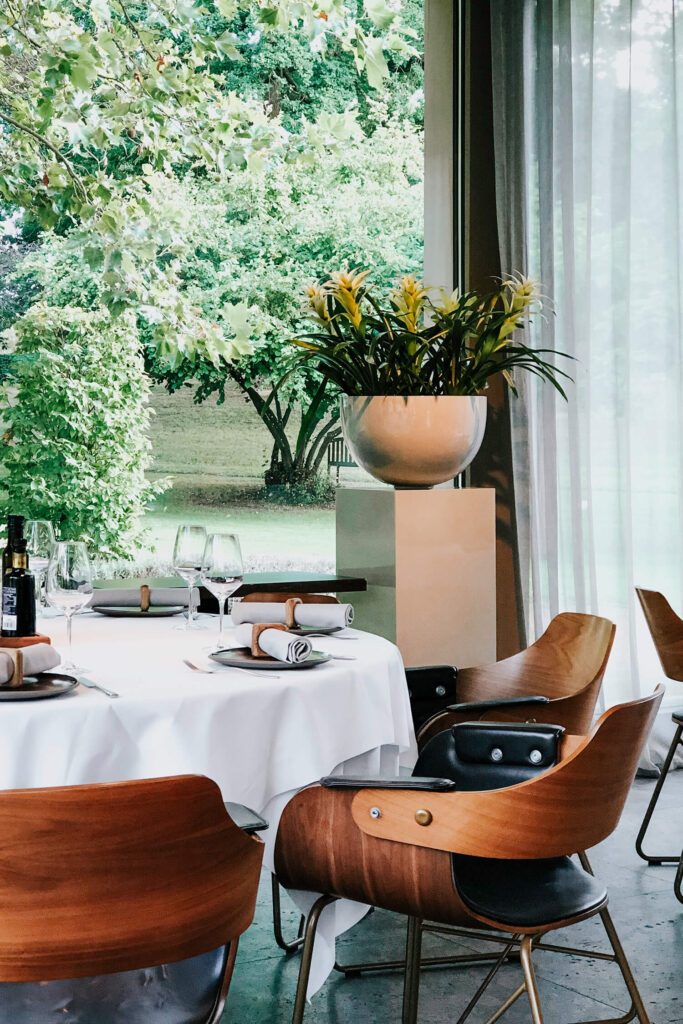
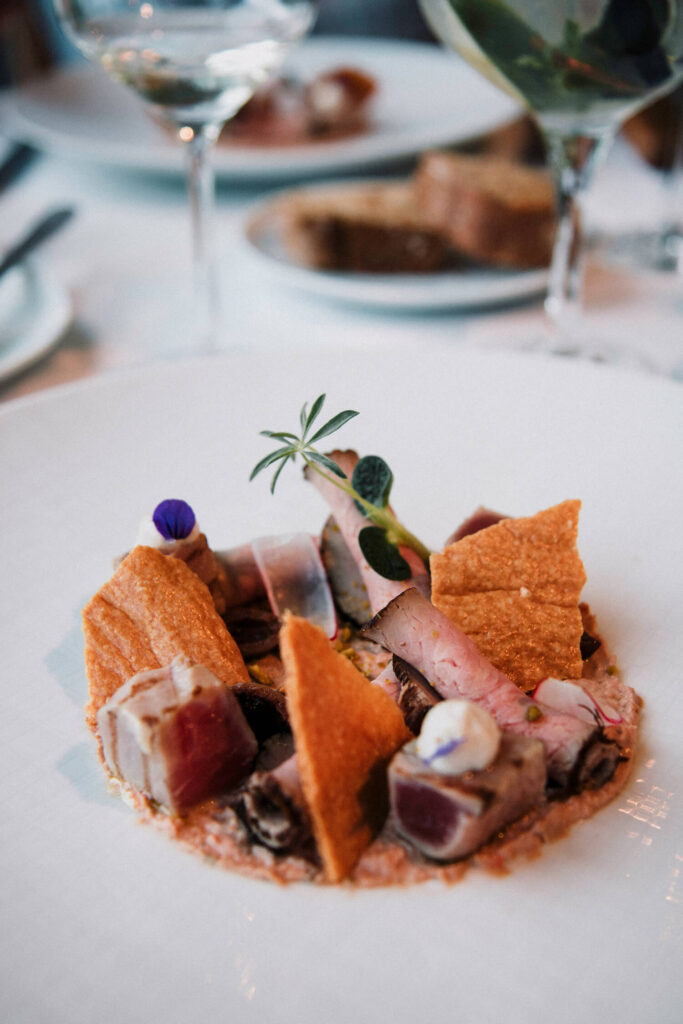
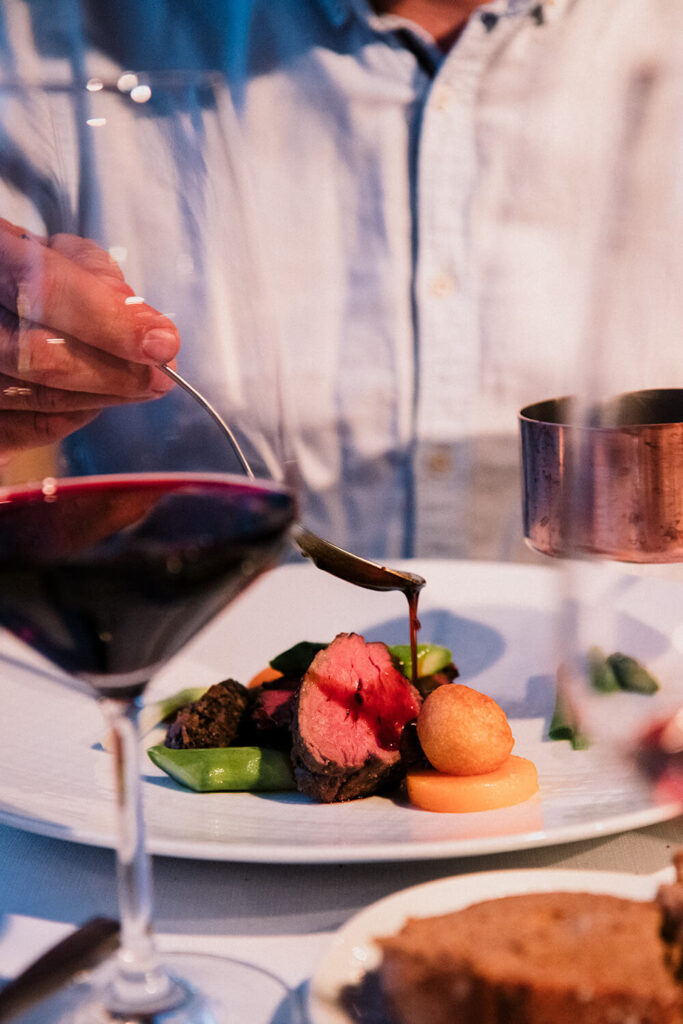

The perfect place to come to rest and to indulge yourself with some of the little pieces of art prepared by chef Raul Govaerts and his team. Their courses can best be described as little paintings, a sight for the eye, which awake all your other senses and lead to an unforgetable culinary experience. We enjoyed a 4-course diner accompanied with a specifically selected set of Italian wines. The origin of the meals: the authentic Italian cuisine, straightforward and simple, cooked with regional, biological ingredients.
Where to eat: Restaurant Pirandello is the perfect place amidst the vines to enjoy a romantic dinner. While you can enjoy classical Italian dishes on the melodies of Andrea Boccelli in Landgraaf, Voerendaal offers a peek into the regional cuisine of the area. The best slice of Limburg Pie is to be enjoyed at de Bernardushoeve.
Best hiking trail: We decided to hike a part of this 24km loop, passing by Wine Estate Fromberg and a windmill.
Tucked away in the southernmost right corner of the Netherlands, there is a precious piece of land waiting to be discovered. The Netherlands may draw ravers, bohemian instagram flower field seekers and good-time partiers to Amsterdam and Keukenhof but it hasn't lost its taste for the simple country life. Somewhere in Zuid Limburg, rough hands are gently picking grapes and bottles of sparkling wine are being popped.
Dive into a whimsical world of fairytale half-timbered houses, flowery meadows and gold and amber vineyards in Zuid Limburg, the Netherlands.
A big thank you to Visit Zuid Limburg and each individual operator who hosted us during our stay. As always, all words and opinions are our own.
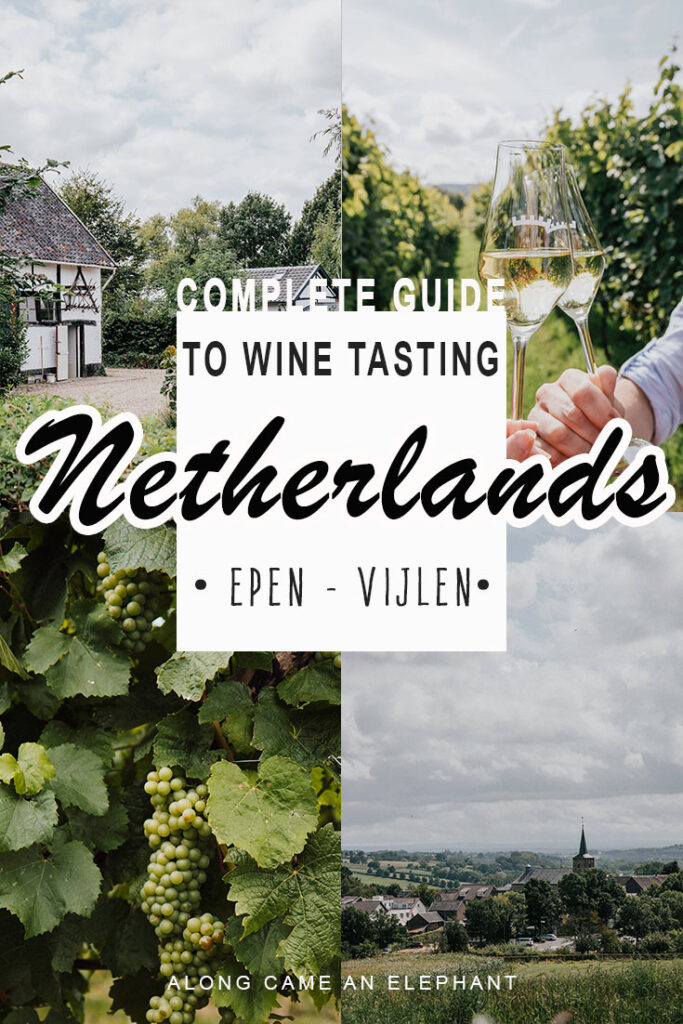

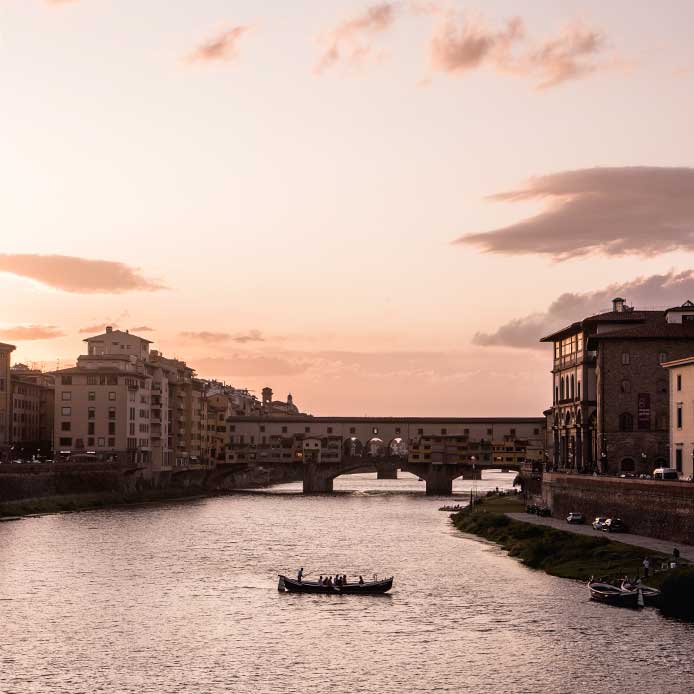
please do not call Limburg Holland, that is offensive to all other Dutch people and especially Limburgers.
For the rest excellent site
Hi Stella,
Thanks for you feedback!
We know Holland is a specific place in The Netherlands, Holland is chosen specifically for SEO purposes and we tried to explain as clearly as possible in the article where Limburg is located. Unfortunately for many people outside of The Netherlands, Holland is often used to refer to the entire country, even if it is not correct.
I am confused how it can be considered offensive though. We do not wish to cause any hurtful feelings, so maybe you can let us know in what way it can be considered as offensive?
Thanks!
Marlo & Kristof
I agree, as someone who lives in South Limburg I hate it when the area gets referred to as ”holland”. I wouldn’t say we get offended, but it’s rude to refer to the area as holland. Especially Limburgers tend to disassociate themselves with the tulips windmill dycke image that holland has. We have our own distinct culture and referring that to Holland feels like it’s not acknowledged that we are in our own way different. The Dutch tourism board actually stopped using the term ”Holland” for that exact same reason. So in short, using Holland is fine if you are talking about North or South Holland. But any other province is called ”The Netherlands”. I understand that lots of people don’t know this, but that’s why it’s better to educate them instead of keeping the term alive.